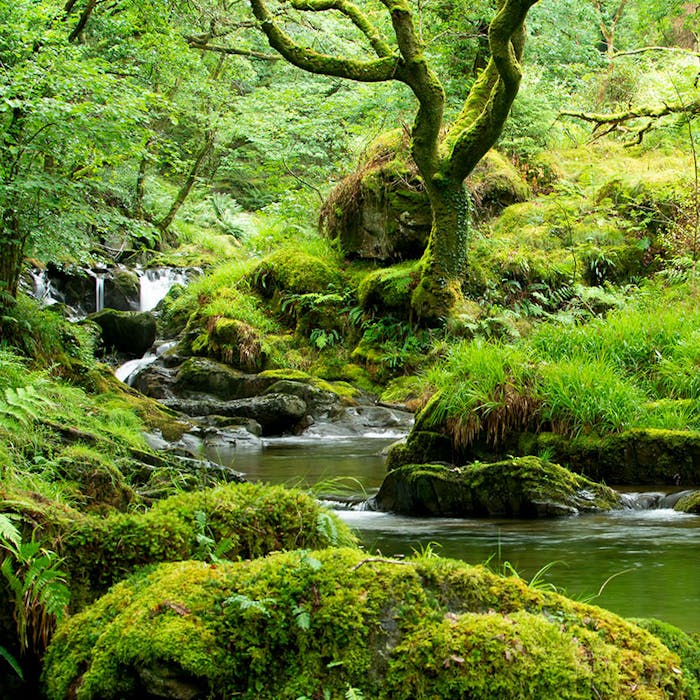
Temperate rainforests - a rare British habitat at risk
Also known as Atlantic or Celtic rainforest, the special temperate rainforest habitat is extremely rare. It exists in a number of specific locations on the west coast of Britain, and is regarded as more threatened than tropical rainforests. The lush conditions it provides are perfect for scarce plants, lichens and fungi, as well as a number of unusual animals.
Temperate rainforest is found in areas subject to maritime climatic influence. These places have high rainfall and humidity and a low annual variation in temperature. Patches of temperate rainforest can be found along the UK's western seaboard, including in the west coast of Scotland, north and west Wales, south Devon, Cornwall, Cumbria and parts of Northern Ireland.
This unique habitat supports ancient oak, birch, ash, pine and hazel woodland, made even more diverse by open glades, boulders, crags, ravines and river gorges.
Such rainforests are one of the most biodiverse habitats in the UK. The high humidity and low temperature range create the perfect conditions for moisture-loving lichens and bryophytes (mosses and liverworts).
A good example of this habitat could contain over 200 different species of bryophytes and 100-200 species of lichen.
A number of rare and threatened species of fungi can also be found in temperate rainforests such as Hazel Gloves Fungus which almost exclusively grows on old hazel trees. It's a sure sign of clean air and a wood's ancient origins.
Migrant birds such as pied flycatcher, wood warbler, redstart and tree pipit thrive in the insect-rich conditions temperate rainforests offer, many flying here to breed each summer. The rare chequered skipper butterfly is also only found in the mild, damp and grassy habitats at the woodland edges of rainforest in western Scotland.
The rainforest was once a well-used human resource, providing timber, charcoal and tannin for tanning leather by local communities. Over the centuries, this habitat has declined through clearances, chronic overgrazing, and conversion to other uses, leaving a small, fragmented and fragile legacy. Another threat to diversity is the Rhododendron bush. Introduced to the UK around 1760, it is an aggressive coloniser that reduces the biodiversity value of a site by obstructing the regeneration of woodlands and once established, is difficult and costly to eradicate.
Further reading
Links to external websites are not maintained by Bite Sized Britain. They are provided to give users access to additional information. Bite Sized Britain is not responsible for the content of these external websites.
